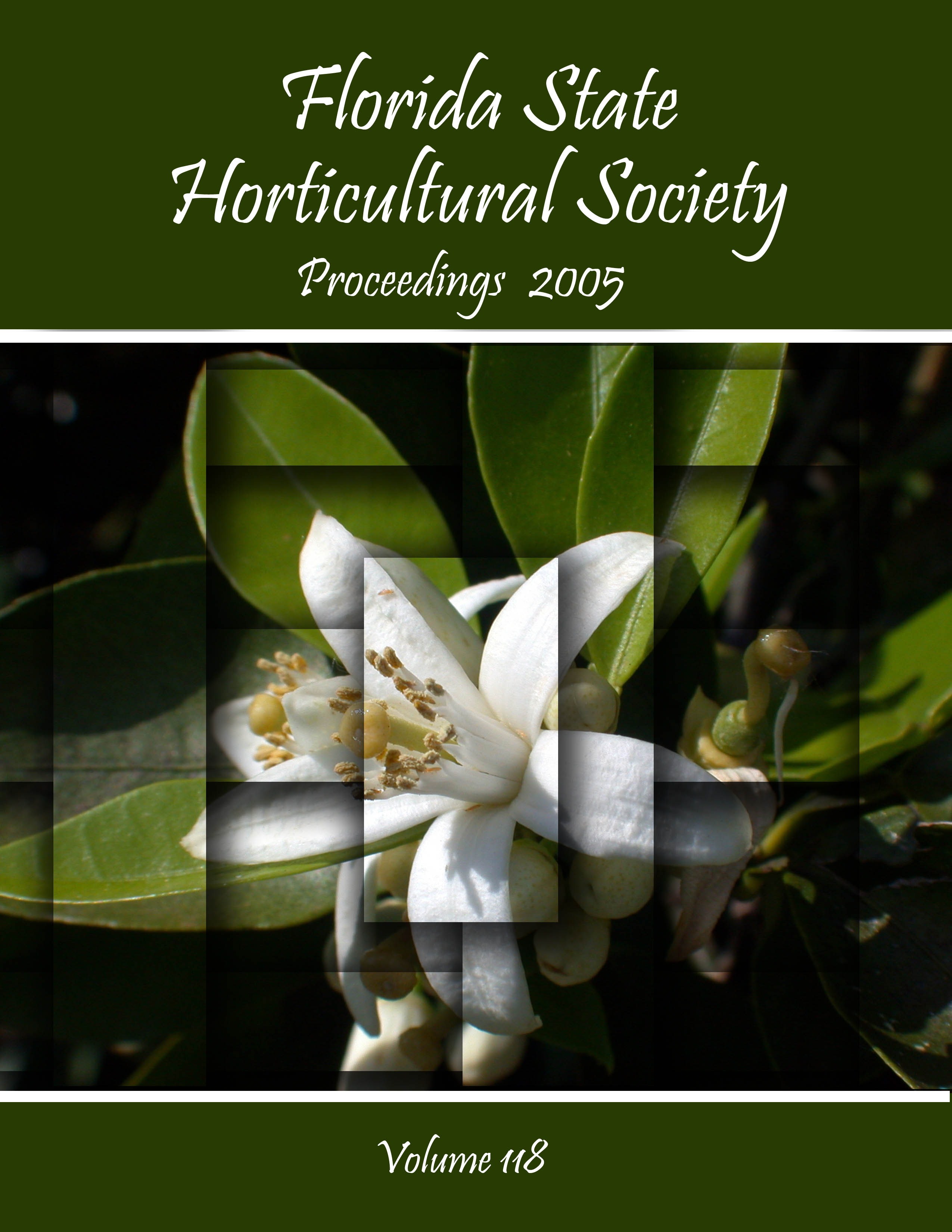Abstract
Citrus trees on Swingle citrumelo (Citrus paradisi Macf. × Poncirus trifoliata [L.] Raf.) rootstock grow well throughout most of the citrus regions of Florida but certain soil characteristics limit the economic life of trees particularly in the Indian River region. Citrus growers and managers in the Indian River region were surveyed and interviewed in order to better understand the range of soil conditions suitable for Swingle rootstock. Site visits were conducted to 118 blocks within groves and their locations were recorded in a geographic database. Tree performance in these blocks was rated on a scale of Excellent to Poor. The area surveyed was about 59% of the total area in citrus production in the Indian River region and included about 14,200 acres of trees planted with Swingle citrumelo. Tree performance was clearly related to soil series as identified in USDA-NRCS soil surveys. The highest performance ratings were typically for trees growing on Malabar, Pineda, and Wabasso. Intermediate tree performance was reported at a large number of sites and had no apparent relationship to the soil type. Trees growing in depressional Winder and Riviera sands were consistently rated substandard to poor. Thus, tree performance was linked to soil series which in turn was related to the physiography of the region.

